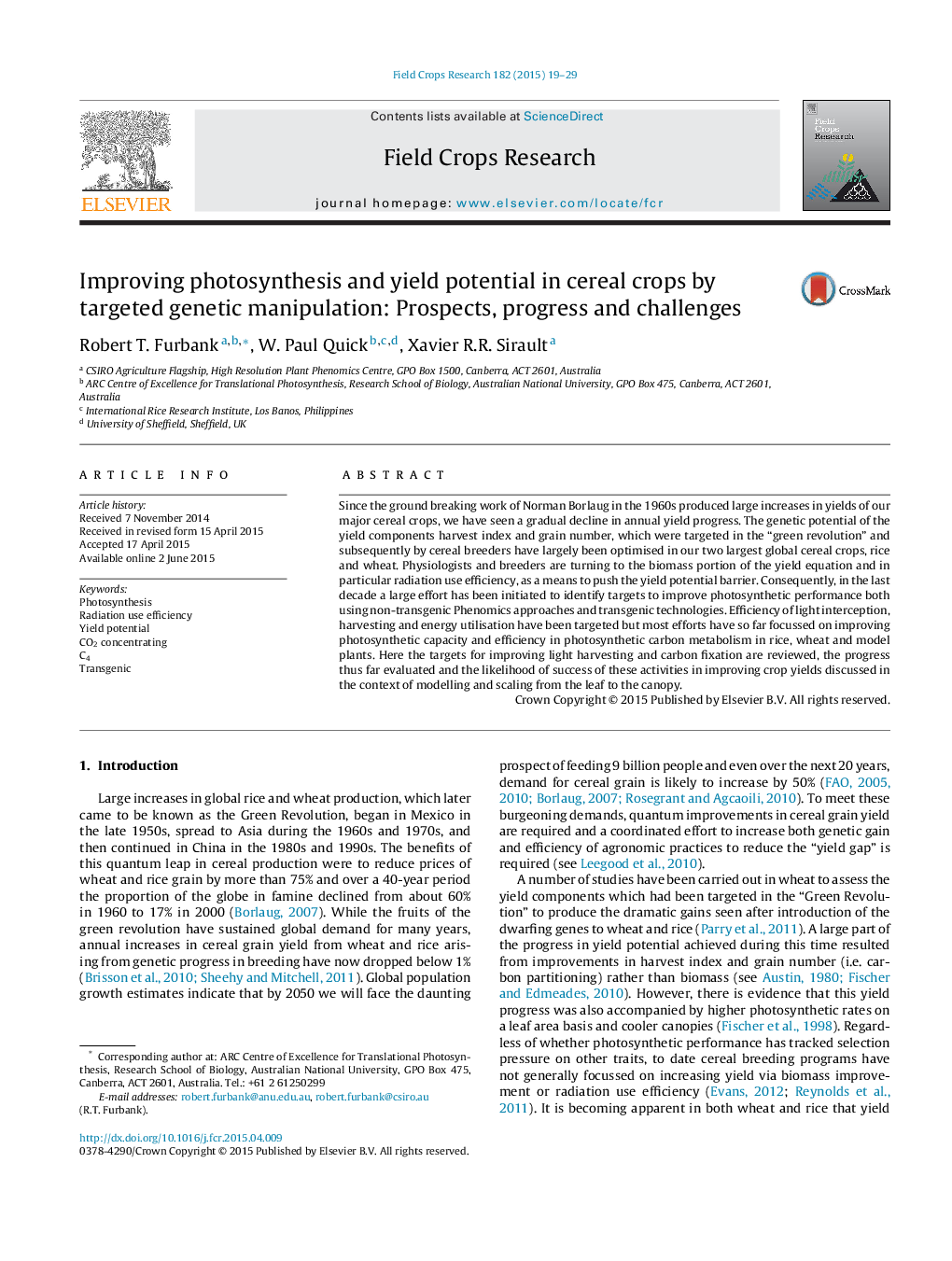| Article ID | Journal | Published Year | Pages | File Type |
|---|---|---|---|---|
| 4509865 | Field Crops Research | 2015 | 11 Pages |
Since the ground breaking work of Norman Borlaug in the 1960s produced large increases in yields of our major cereal crops, we have seen a gradual decline in annual yield progress. The genetic potential of the yield components harvest index and grain number, which were targeted in the “green revolution” and subsequently by cereal breeders have largely been optimised in our two largest global cereal crops, rice and wheat. Physiologists and breeders are turning to the biomass portion of the yield equation and in particular radiation use efficiency, as a means to push the yield potential barrier. Consequently, in the last decade a large effort has been initiated to identify targets to improve photosynthetic performance both using non-transgenic Phenomics approaches and transgenic technologies. Efficiency of light interception, harvesting and energy utilisation have been targeted but most efforts have so far focussed on improving photosynthetic capacity and efficiency in photosynthetic carbon metabolism in rice, wheat and model plants. Here the targets for improving light harvesting and carbon fixation are reviewed, the progress thus far evaluated and the likelihood of success of these activities in improving crop yields discussed in the context of modelling and scaling from the leaf to the canopy.
